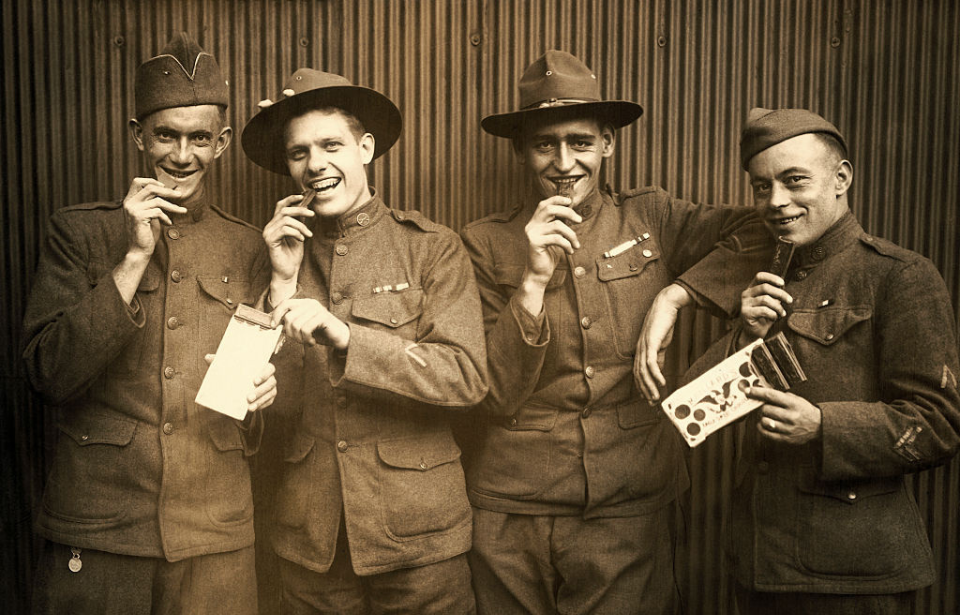Chocolate lovers tend to obsess over the treat’s yummy taste. However, it hasn’t always had such a great one. In fact, few know that Hershey’s developed chocolate bars during the Second World War that were intended to not taste good. The Field Ration D bars, as they were known, contained life-saving ingredients, should soldiers have needed them… As long as they could get over their taste.
Looking for rations that could survive combat conditions
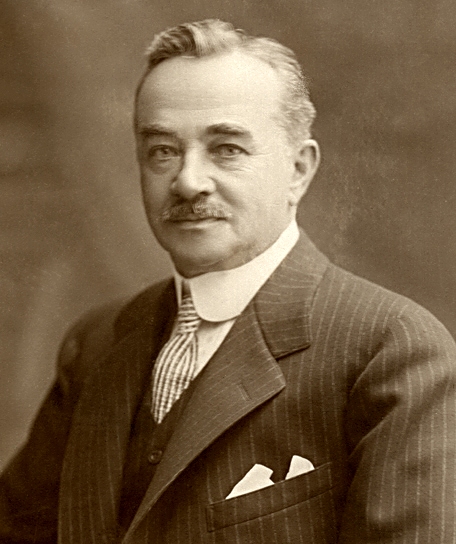
In April 1937, Col. Paul Logan of the office of the US Army Quartermaster General met with Hershey Chocolate Corp. President William F.R. Murrie and Chief Chemist Sam Hinkle. Logan was looking for a life-preserving chocolate bar that could be handed out to American soldiers during conflicts; specifically, he was looking for Hershey to manufacture a pocket-sized bar that could survive high heat and provide soldiers with lots of nutrients.
The kicker: this chocolate treat shouldn’t taste any better than “a boiled potato.”
Murrie and Hinkle brought this prospective business deal to Milton S. Hershey, who was very interested in the project.
Field Ration D
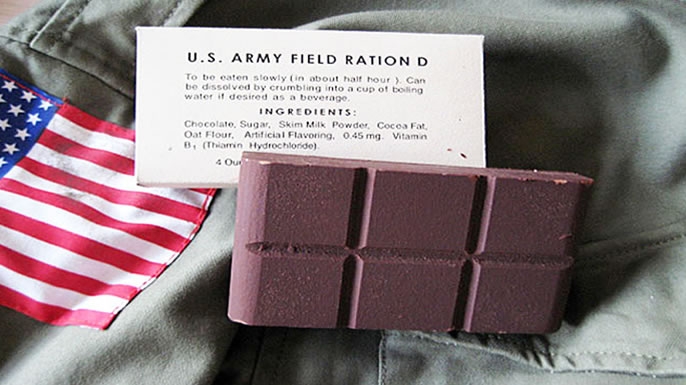
Paul Logan had four main requirements for the Field Ration D Bar:
- It had to weigh four ounces.
- It should have a high caloric value.
- It needed the ability to withstand high temperatures.
- It couldn’t be too tasty.
The final result developed by Hershey was dubbed the “Field Ration D.” It consisted of a blend of chocolate, sugar, cocao fat, skim milk powder, artificial flavoring and oat flour. The mixture created was essentially a heavy paste that needed to be pressed, rather than poured, into molds. This made the bar was so dense that the instructions attached suggested it should be eaten over the span of about half an hour.
Keeping the Hershey chocolate factory open
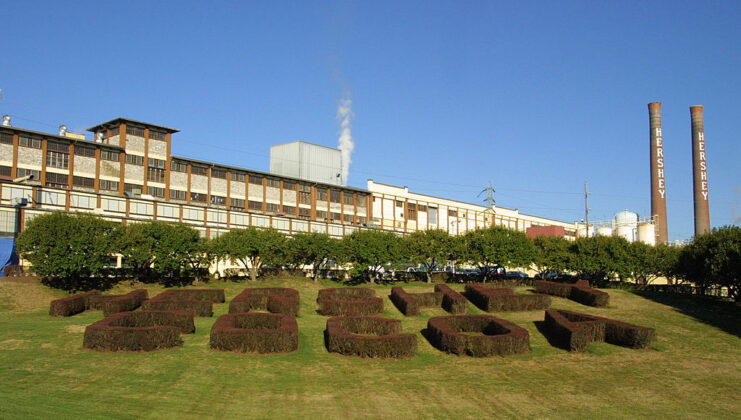
Once the United States entered the Second World War, Congress planned to shut down the candy industry for the duration of the conflict, deeming the industry non-essential. In an attempt to keep his business operating, Milton Hershey argued that Hershey’s chocolate was an essential source of nutrients for American troops.
Thus, the bulk of the company’s wartime production was geared toward producing chocolate for the American forces.
American troops weren’t fond of the Field Ration D
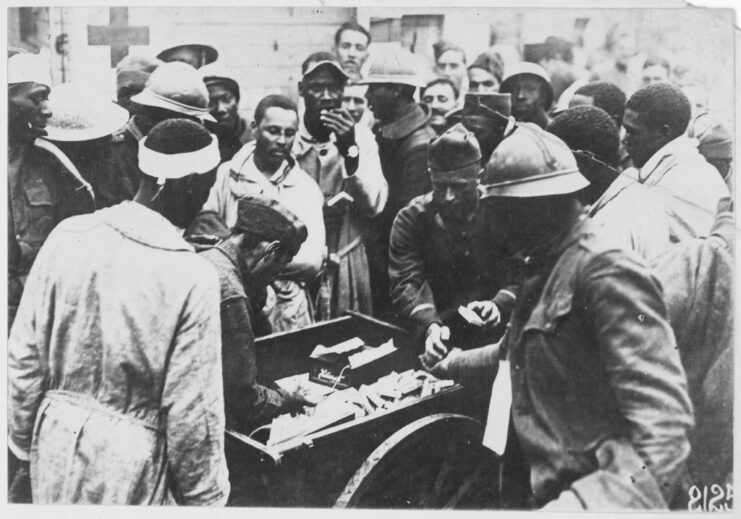
While Hershey’s was producing a large amount of Field Ration D bars during World War II, American soldiers were certainly not their biggest fans. Troops jokingly nicknamed the bars Germany’s “secret weapon,” due to their effect on digestive systems. Troops were also known to trade the bars for better tasting food with unsuspecting civilians who weren’t well acquainted with the chocolate.
Even though the taste of the Field Ration D wasn’t popular among troops, Hershey’s won the Army-Navy “E” Production Award in 1942. This award was given to companies during the conflict for excellence in the production of top-quality equipment for the US military.
Hershey’s Tropical Bar
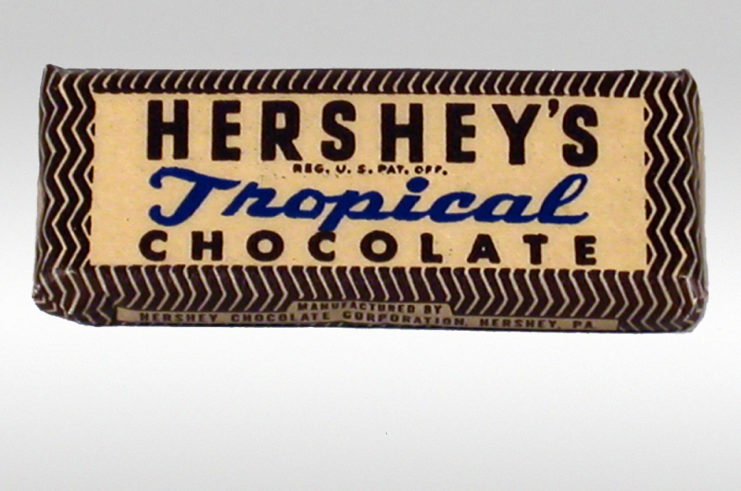
In 1943, the US Army, once again, approached Hershey’s about the possibility of developing a new chocolate bar for the Pacific Theater. The goal for this was to withstand high, tropical temperatures and taste a little bit better than the Field Ration D.
The Hershey’s Tropical Chocolate bars were one- or two-ounce pieces of chocolate that could hold their shape after one hour in 120-degree Fahrenheit temperatures. The bar was made from many of the same ingredients as the Field Ration D, but included vitamin B-1. This helped prevent beriberi, which resulted from a B-1 deficiency, that caused nerve, heart and muscle damage, as well as overall weakness.
It’s estimated that, by the end of 1945, over three billion Field Ration Ds had been produced and distributed to soldiers across the world. Similarly, by the end of World War II, nearly 38o million two-ounce Tropical Chocolate bars had been produced for the US military.
More from us: Bob Denard: The Mercenary ‘Pirate of the Republic’
Fast-forward to July 1971, when the Hershey’s Tropical Chocolate bar went to the moon with the Apollo 15 astronauts. While these chocolate bars might not have had the best taste, they sure were widespread.
